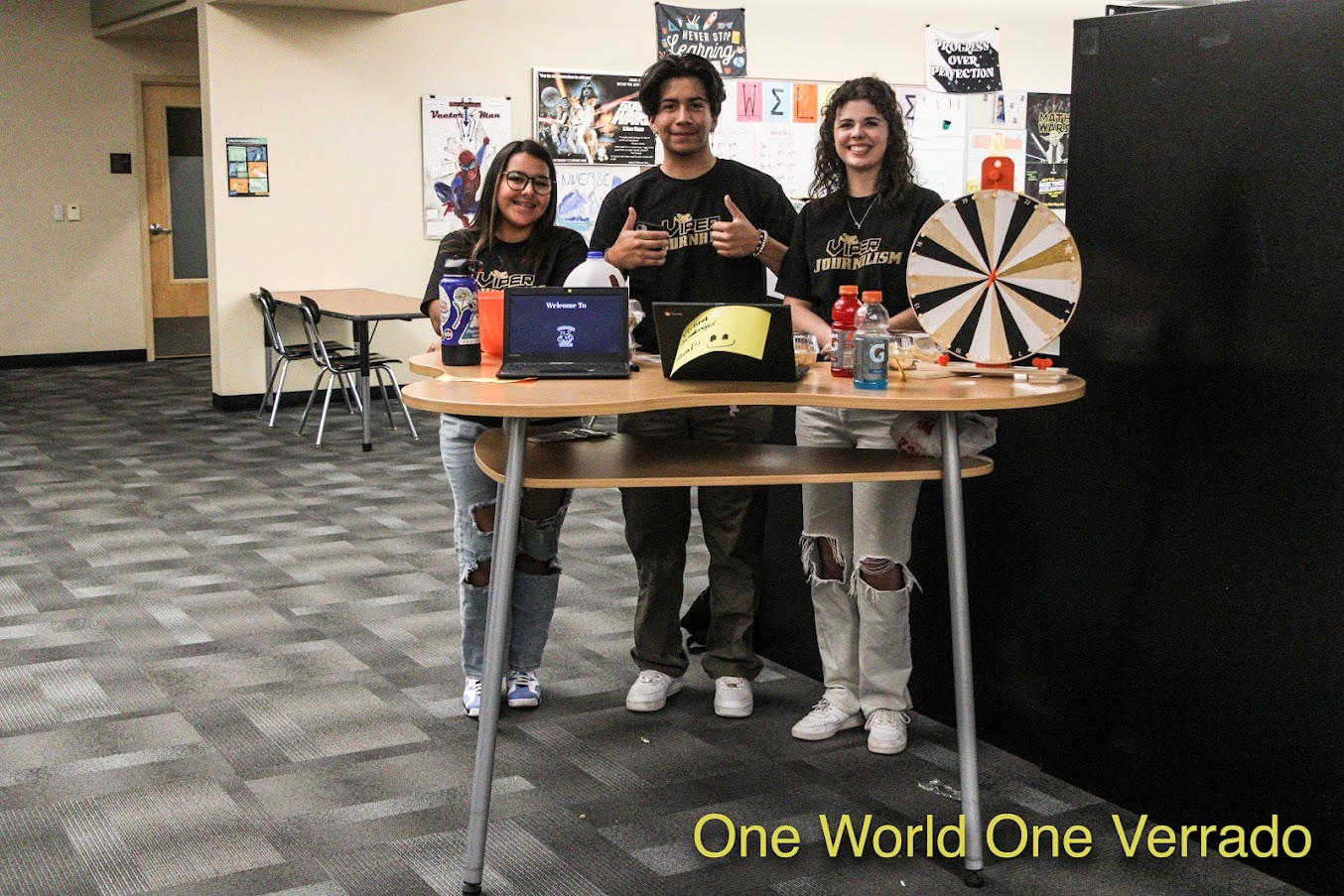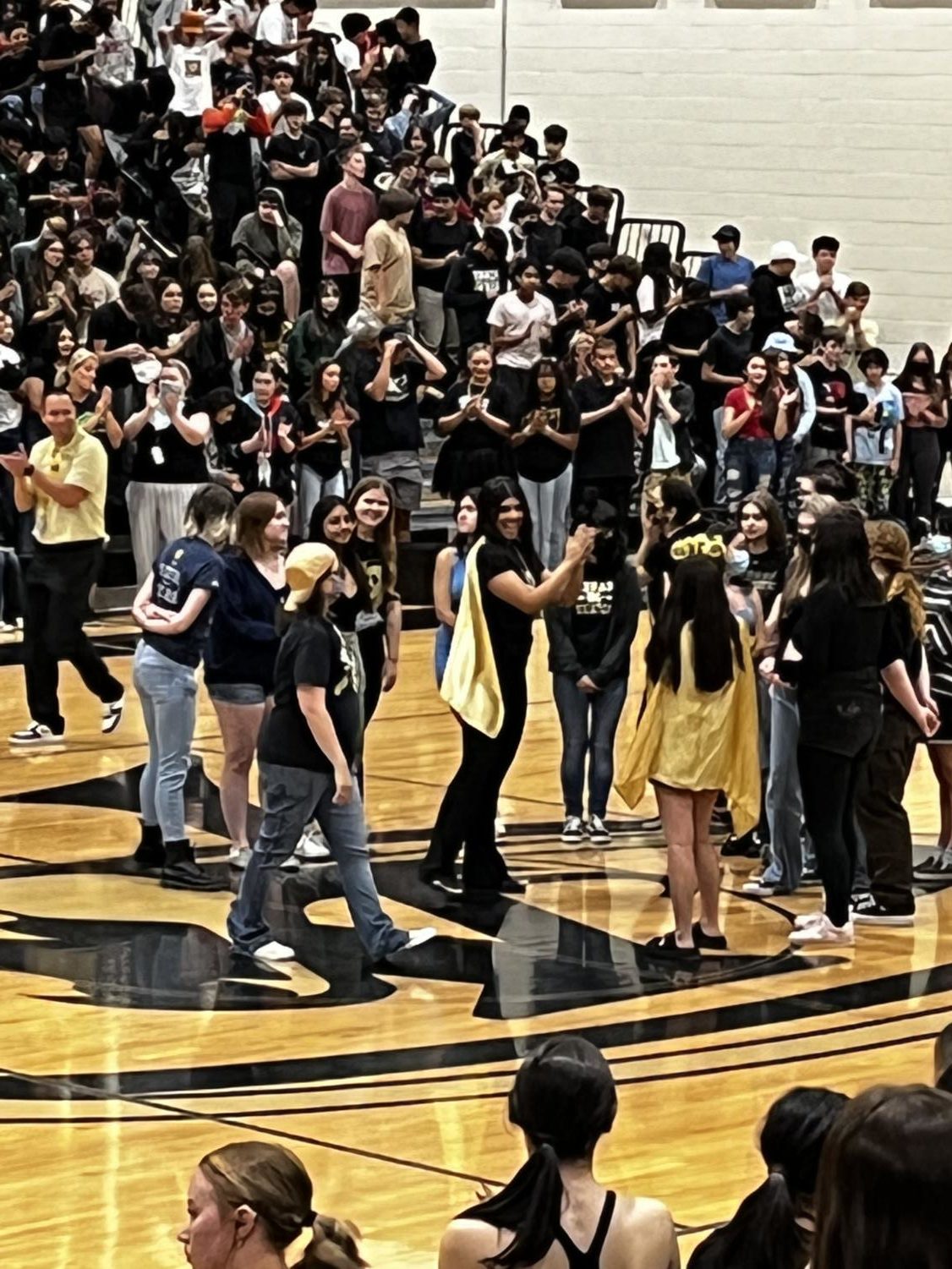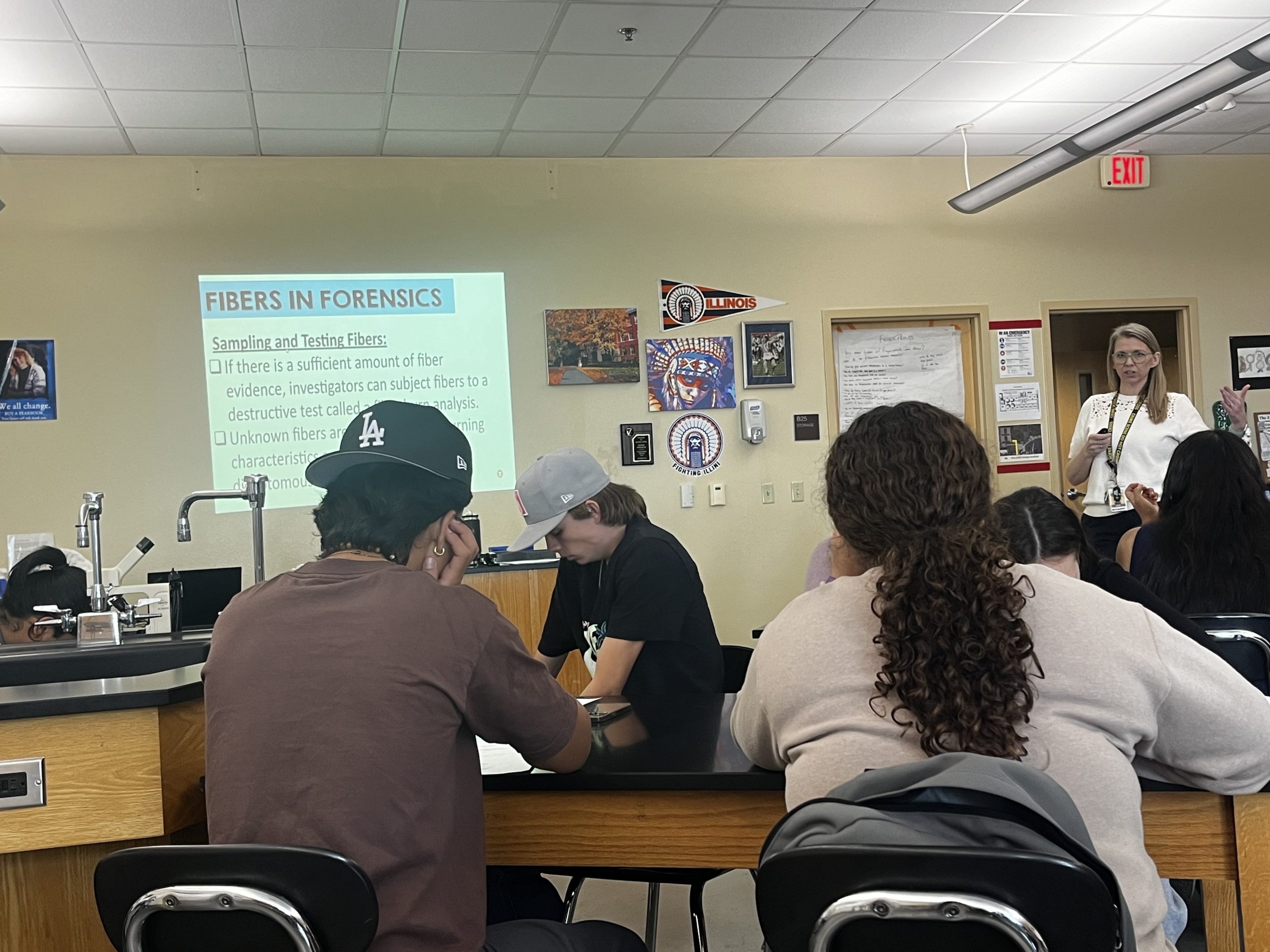In a lineup of typical science classes at any high school, one class stands out from the crowd at Verrado: Forensic Science.
Unlike biology or chemistry, this class dives deep into the world of crime-solving, offering students hands-on experience in the basics of criminal justice. For those with a curiosity for clues and a potential career in forensics, it’s a perfect fit.
Forensics has been taught by Mrs. Sherman for the past five years. Her interest in the subject sparked from her love of science and true crime. Sherman has always been fascinated by the blend of science and true crime. Forensic science brings together the analytical and problem-solving aspects of science with real-world applications that have a profound impact.
Her passion and interest in the topic have made for a very engaging classroom environment. When asked how she feels about teaching she expressed, “Teaching allows me to share my passion for both science and critical thinking while giving students a glimpse into a field that is not only intellectually stimulating but also meaningful in society. “
Forensic science encompasses a range of disciplines that are vital for crime scene investigation and evidence analysis. The course explores various types of evidence, including biological samples, fingerprints, trace evidence, and digital forensics.
Students have the opportunity to closely examine evidence under a microscope, where they learn techniques for analyzing hair, fibers, and other microscopic materials.
Additionally, this class highlights the important roles of forensic experts, such as forensic psychologists, odontologists, and anthropologists, emphasizing how these specialists contribute their unique skills to investigations.
When asked what her favorite topic to teach is, Sherman answered, “I find decomposition particularly fascinating. The stages of decomposition provide critical clues about the time since death, or what forensic experts call the postmortem interval.”
In forensics, decomposition refers to the natural process by which a body breaks down after death, influenced by environmental factors such as temperature, humidity, and the presence of insects. This process occurs in several stages—fresh, bloat, active decay, advanced decay, and dry remains.
Teaching about the insects, bacteria, and environmental factors that influence decomposition demonstrates the importance of timing and observation in an investigation and is incredibly useful to forensic scientists.
The class blends real-world cases with different scientific principles to create a handful of interesting topics for students to learn. These cases provide insight to those who wish to learn more about true crime. “I like to use real cases in my lessons to bring the subject to life and make it more relatable for students.” Sherman likes to provide those who already enjoy the topic with more material to view in an academic setting.
Sherman selects cases that illustrate key forensic techniques or ethical issues. This way, students can see how the scientific principles they’re learning are applied in real investigations. I also encourage them to think critically about the evidence and how it can be interpreted.”
Forensics is a very lab-heavy-oriented class, having students focus on hands-on tasks to learn about the process and ethics of forensic science. Having such an interactive class provides students with an opportunity to learn skills that could potentially benefit them in the workforce.
When asked what advice she would give to students who wish to pursue a career in forensics, Mrs. Sherman suggests, “Build a strong foundation in science, especially in subjects like biology, chemistry, and physics, because these are the core elements of forensic science. Math and analytical thinking are also important, as forensics is all about solving problems using evidence and logic.”
To further connect to the topic of crime and criminal justice she expands with, “Forensic science isn’t just about the science; it’s about applying that knowledge in a way that serves justice.” Pursuing this career is a long, but rewarding path.
Depending on the field, it could take years of work. Fortunately, there are many resources for aspiring forensic scientists. She adds, “Internships, volunteering, or even attending forensic workshops can give you hands-on experience, and reading up on real cases can help you understand how theory meets practice.”
Although the popularity of this class has gone up in the past few years, many students still have doubts about what the class covers. When the question of misconceptions came up, Sherman stated, “One of the biggest misconceptions students often have about forensic science is that it’s as fast and clear-cut as they see on TV shows like CSI. “
The impact of dramatized television shows has led many young people to have a skewed idea of what Forensic science is. They expect results to come in instantly, when in reality, analyzing evidence—especially DNA—can take days or even weeks.
Another misconception is that every case has definitive evidence that leads to a clear conclusion. In real life, cases are often ambiguous, and forensic evidence may not always give a straightforward answer.
This class teaches some heavier topics that connect to crime. The goal is to give students a glimpse into the many struggles in the world. Mrs. Sherman’s dedication to this subject is shown through her engaged students and love for teaching.





Fernanda • Dec 3, 2024 at 10:17 AM
This article is amazing! I love how they put Mrs. Sherman’s background and tied in her love for forensics. It truly does make a difference in the classroom when a teacher loves their work!
Easton Romero • Nov 26, 2024 at 11:33 PM
I love Mrs Sherman’s class I am taking this class this year, and I love the way you highlight the teaching and the way the curricular is. The article also highlights the jobs, how long it can take to enter some fields, and how forensics can be a profession.
Noah Jaurigue • Nov 22, 2024 at 1:15 PM
Whoever made this article does an excellent job at explaining what Forensics Science class is and how interesting and engaging it can be. It also does a great job at showing much Mrs. Sherman cares about this class and how much effort is put into it to make it absolutely fun and educational for her students.
Magnolia • Nov 22, 2024 at 12:52 PM
I learned a lot from this article alone! I didn’t even know this was even a class at our school! I’d love to join this class next year. I like how you interpret Mrs. Sherman and get citations from her directly about the class and overviews about it. It excites me about the possibility of participating in this field of crime-solving. Overall, excellent job!
Tony Gutierrez • Nov 22, 2024 at 9:46 AM
this class seems really fun and this article proves it. they explain the love and passion that she has had for forensic science, and the way that she teaches the class. this article shows the way she teaches and includes that she uses real world cases to teach which is a fun and interesting way to get kids intrigued. i like this article and im sure others will as well
Brooklyn Little • Nov 22, 2024 at 9:42 AM
The article does a good job showing Mrs. Sherman’s passion for forensic science and her being able to make a engaging and place for her students. I like how it shows the unique and different parts of the class, like hands-on parts and real-world parts, making it evident how much effort she puts into preparing her students for potential careers in the field.
Isaiah • Nov 22, 2024 at 9:25 AM
This article does a great job showing how interesting and unique Verrado’s Forensic Science class is. Mrs. Sherman’s talent for the subject and her teaching style make the class exciting and fun. By using real-world cases, she helps students see how forensic science works in real life and inspires them to think about it as a future career. The class teaches useful skills and encourages students to think differently about solving problems and helping justice.
Antonella Suppici • Nov 22, 2024 at 8:48 AM
I like science and true crime so this article was really interesting to read because it went more in-depth about the class and what they actually do, I also learned a lot from it like how TV forensics is not very accurate to the actual process and how there are several steps to analyzing the deceased. It was also cool to learn that Mrs. Sherman uses real cases in her lesson, I feel like that could be really beneficial to those who want to go into the field after high school.